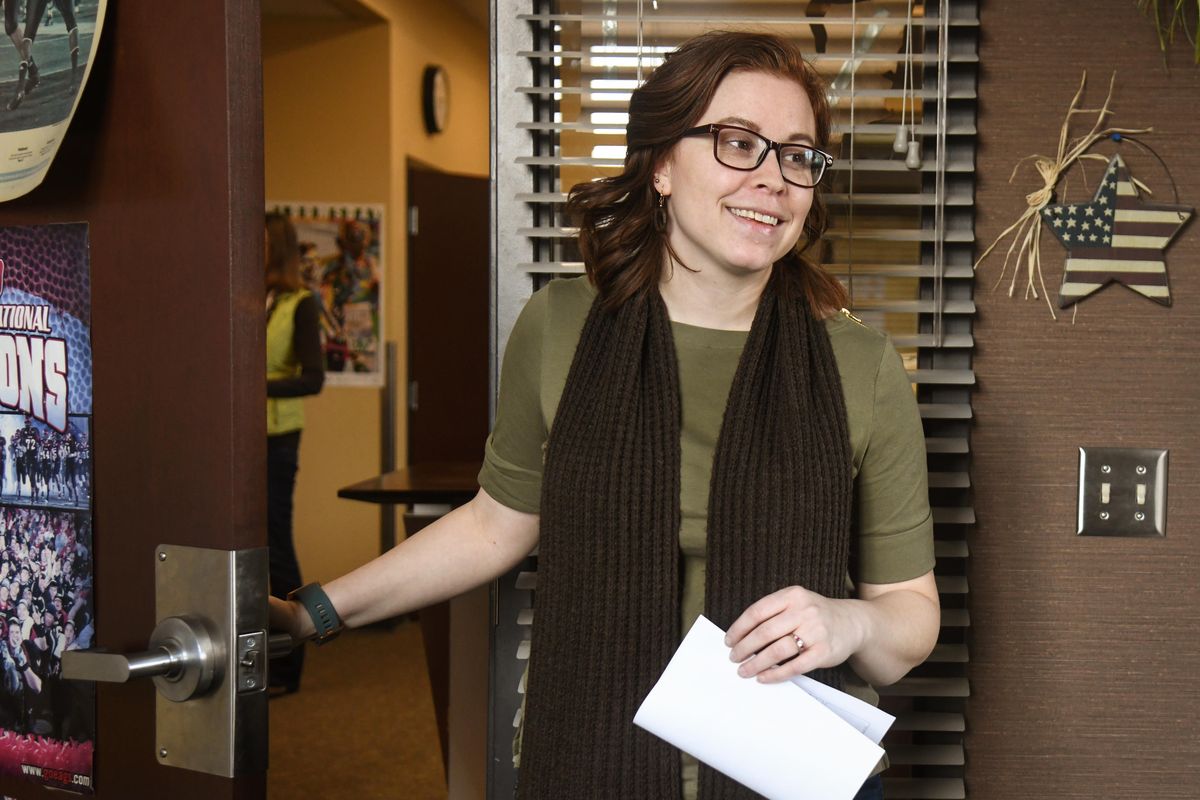High number of layoffs at Rogers High School shows ongoing disparity among city’s schools

As if they needed another one, the students in Hillyard are getting a tough lesson in economics.
This one came from Spokane Public Schools, which is facing a $31 million budget deficit next year and may need to cut about 325 jobs by then.
The district’s principals received the bad news Thursday morning, along with layoff notices for affected teachers and other certificated staffers in their building.
As she left the district’s downtown office, Rogers High School principal Lori Wyborney carried a stack of bad news: 16 layoff notices.
She left the central office with Lewis and Clark High School principal Marybeth Smith, who didn’t have to give layoff notices to any teachers on her staff.
Layoff notices were based on seniority, and habitually high turnover at Rogers equates to a younger staff with fewer years on the job.
It’s a rough cycle in Hillyard and many other low-income urban neighborhoods, where young teachers gain experience and then transfer to another job, often at a school in more affluent parts of town.
The district has declined to provide a school-by-school breakdown of layoff numbers. Schools officials cite privacy concerns.
But school staffs across Spokane are talking about the upcoming job losses and so are parents.
Asked whether other schools in northeast Spokane received a higher than average number of layoff notices, Wyborney responded: “What do you think?”
The 16 layoff notices at Rogers represent 9 percent of the 182 notices that went out across Spokane schools.
“We’re No. 1 again – yay!” Wyborney said Monday as the news sank in. It means that next year a lot of new teachers will be coming to Rogers.
Some will be reluctant, the product of involuntary transfers from other schools. Others will be eager but unaccustomed to the realities of life in Hillyard.
“I’m not sure how we’re going to deal with that,” said Andre Ramsey, who’s only a sophomore but is the student president at Rogers.
“We’re going to have to adapt to all these new people who are coming here, and teachers are going to have to adapt to us because they’re not used to the environment that we’re in right now.”
To show solidarity with those affected by layoffs, Wyborney and her staff and many students were dressed in brown and green.
Those are the colors of the district’s logo, which is a tree fashioned from outstretched arms and hands.
Wyborney appreciates the analogy. “The more hands we put on a kid’s head, the better chance he’ll have of being successful.”
She also appreciates the extra funding sent to Rogers and other low-income schools.
“Money makes a difference, it does,” said Wyborney, who has spent most of her career serving students in low-income neighborhoods. “But all that work we’ve done to compile a system here that has shown success for students that are high-need, and now we have to look at things differently.”
Some at Rogers are trying to do just that.
On Thursday, counselor Stacie Collier got a layoff notice. The next morning she posted the news on Facebook, along with a message for the district on the difference between equality and equity.
“Equality means everyone gets the same thing, and equity means everyone gets what they need to succeed,” posted Collier.
Her message was clear: Employees at Rogers and similar schools need more than a paycheck.
Another Rogers counselor, Jeremy Day, sent out a suggestion via email: Allow teachers and other staff in low-income neighborhoods to earn seniority at a faster clip.
According to the national Learning Policy Institute, a California study indicated that teacher flight can be lessened by improving working conditions and training.
Too often, the report says, teachers “are typically under-prepared and not supported as they confront lower levels of resources, poorer working conditions, and the stresses of working with students and families who have a wide range of needs.”
“Beginning teachers are particularly vulnerable because they are more likely to be assigned low-performing students,” the report concluded.
Katy Henry, president of the Spokane Education Association union, said Monday that she would like to “have more of a conversation as to what happens in schools that have a lot of turnover.”
“How can we better support teachers in those buildings?” said Henry, who met with district officials on Monday to begin the process of moving teachers into vacant positions.
Teachers with more seniority could be reassigned from other Spokane high schools to Rogers.
“There’s no school that won’t be affected,” Henry said.
In the meantime, Wyborney and the Rogers community are trying to cope with a new reality.
The day after the layoff notices went out, Wyborney spoke to every class at Rogers: “I reassured them that no matter what, this fall we will be here for you.”